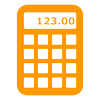Company History
-
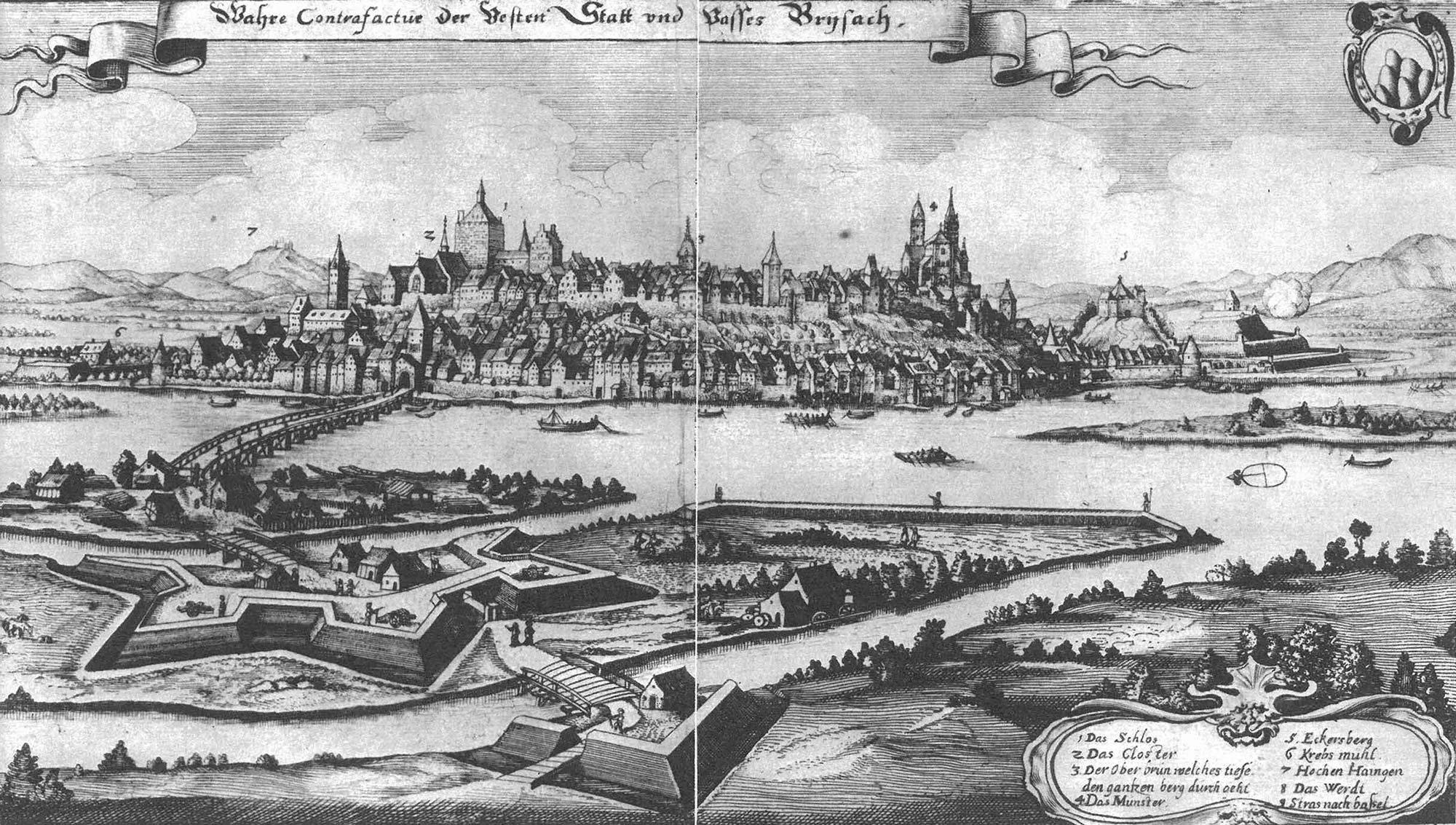
1838
One company, six generations.These were amazing entrepreneurs. Power people who can recognise, invest in and grasp opportunities. Starting with Johann Baptist Hau, the company's founder. Was it a coincidence that he became interested in Rudolf Erismann's factory in 1838? Where operations "had not been turned into reality for various reasons".
Perhaps: Because his daughter, Natalie Pauline, was interested in her father's former apprentice, Franz Joseph Müller. To help with the practicalities of love's young dream, Hau bought an interest in the wallpaper company. And so Erismann & Cie. was founded in Breisach am Rhein in 1838.
-
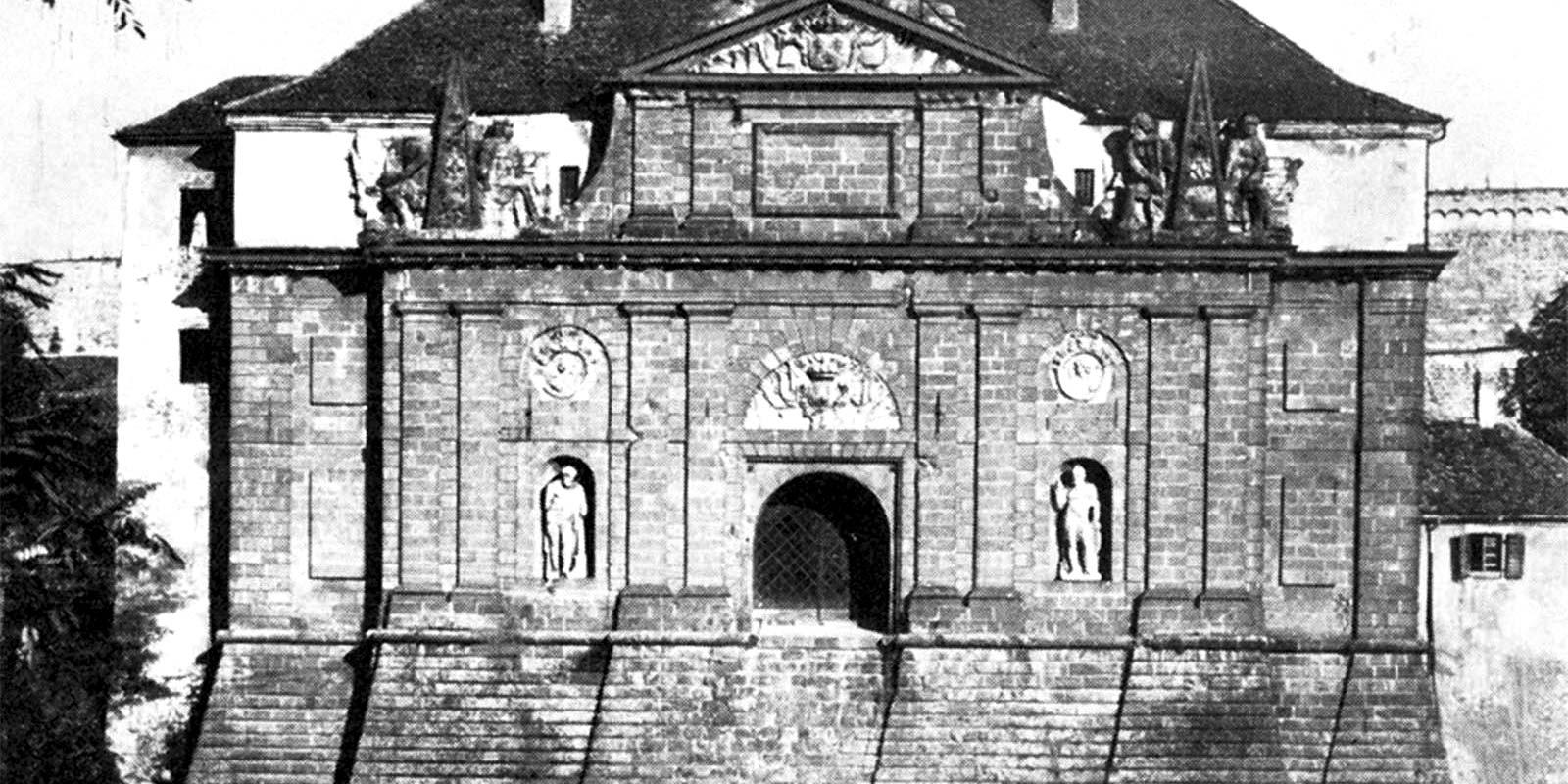
1839
The Rhine GateOriginally the magnificent entrance gate to the French town of Breisach; built in 1678 by the great fortress builder Jacques Tarade on the basis of plans drawn up by Louis XIV's star architect, Marshal Vauban.
In fact, Erismann & Cie. produced wallpapers here from 1838 to 1858, until space became too tight. Today, the Rhine Gates houses the Local History Museum.
-
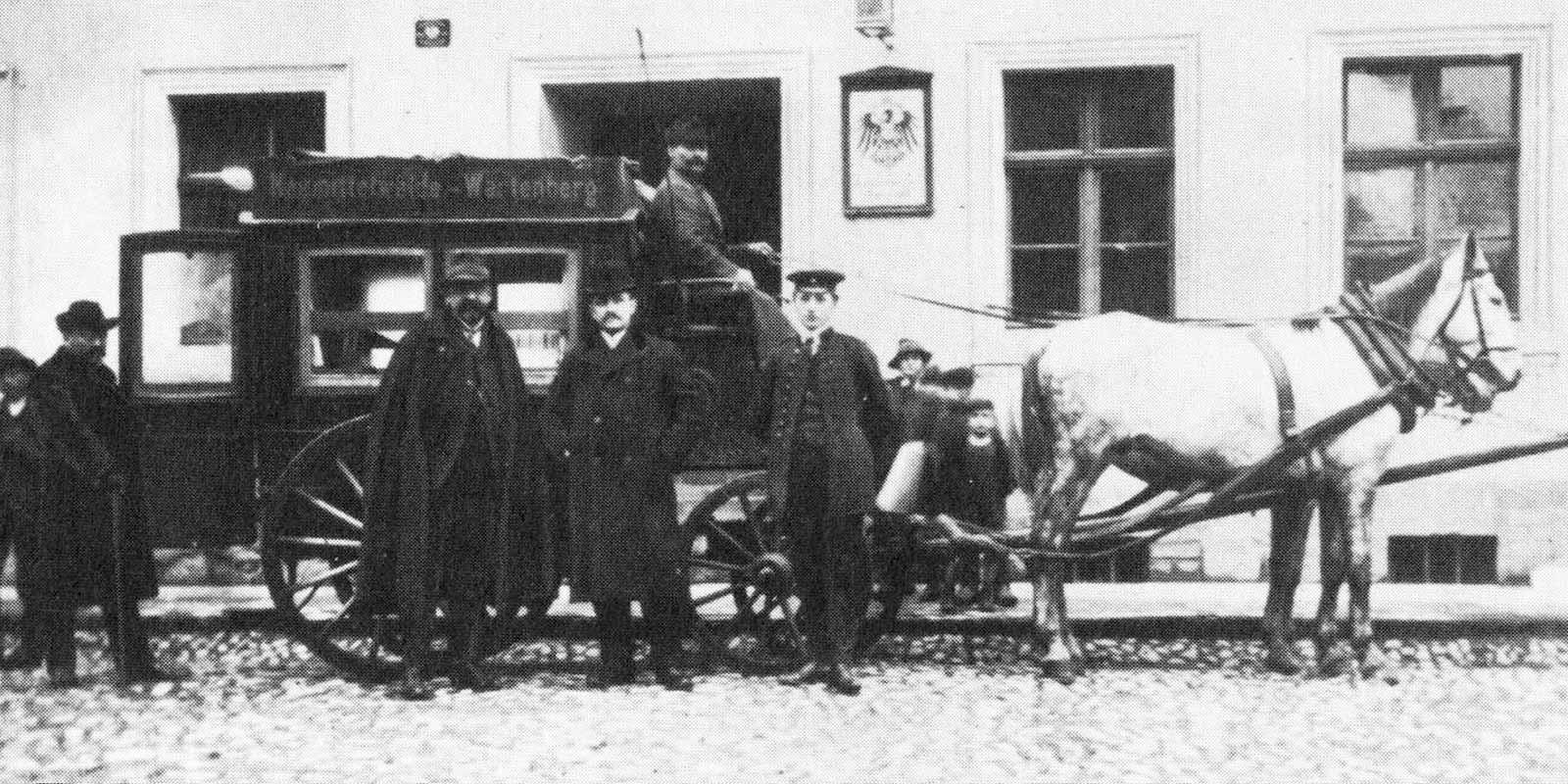
1840
"WE FOLLOW THE MARKET."And how? By horsepower: in 1840/41, Franz Joseph Müller travelled throughout the German Customs Union area with wallpaper samples from Erismann & Cie. – in a horse-drawn carriage.
A "pit stop" where commercial travellers and young businessmen such as Franz Joseph Müller could take a break now and again.
-

1848
Made exclusively by handTo start with, every wallpaper pattern was unique, because it was hand-painted. From this, the skilled workman made reproducible patterns by hand "à la planche", with a wooden model. He would print the strips of paper - also leather or fabric - piece by piece using the wooden template.
Total dedication at the hand printing machine in around 1848: Adjust the template, bring it down, repeat.
-
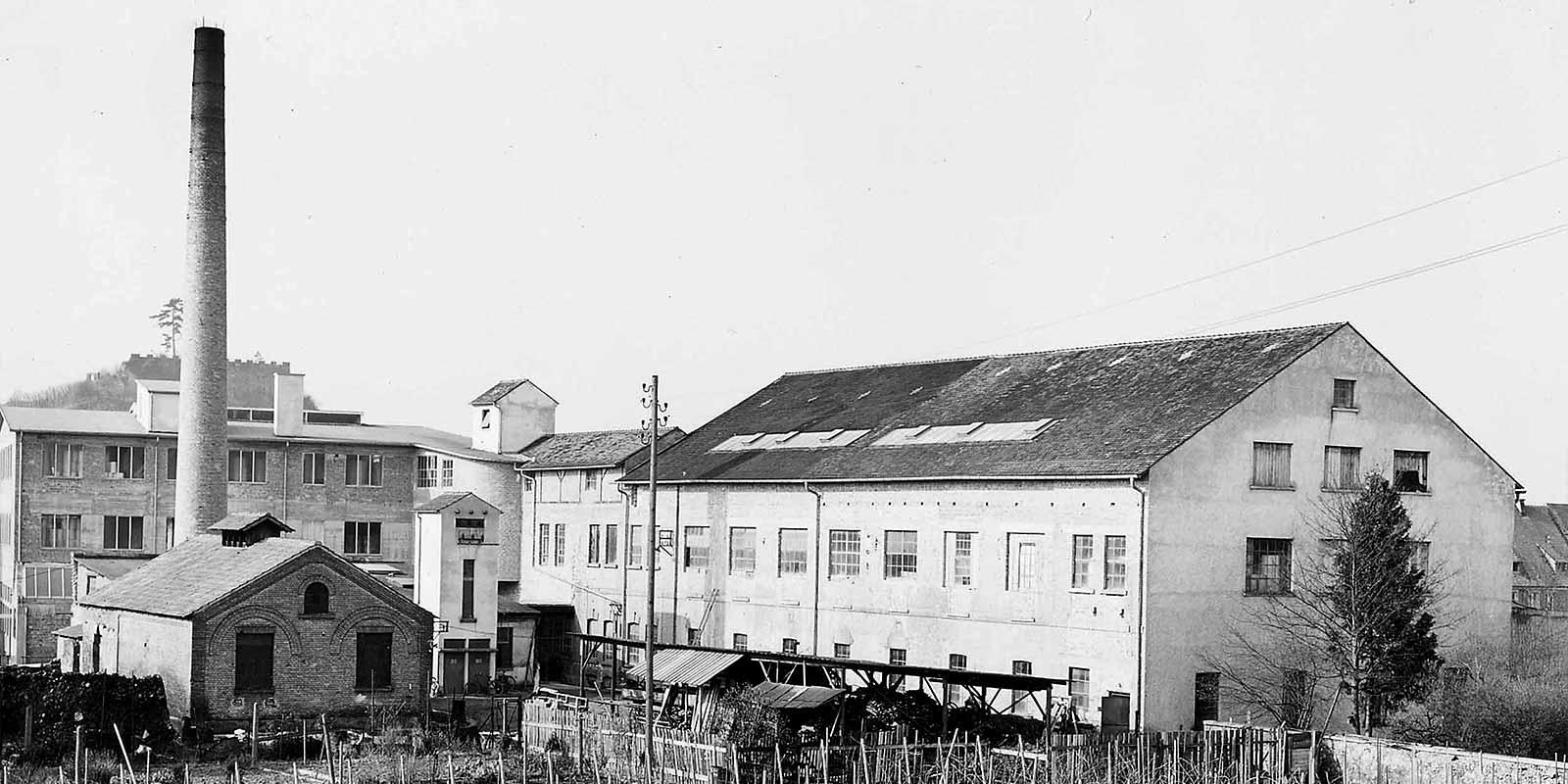
1858
The first major new buildingThe Rhine Gate is not big enough any more. Under the guidance of Franz Joseph Müller, the hand printing factory is built in what is to become Richard-Müller-Strasse in Breisach.
The new building provides the right conditions for an epoch when wallpaper manufacturing was becoming increasingly mechanised.
-
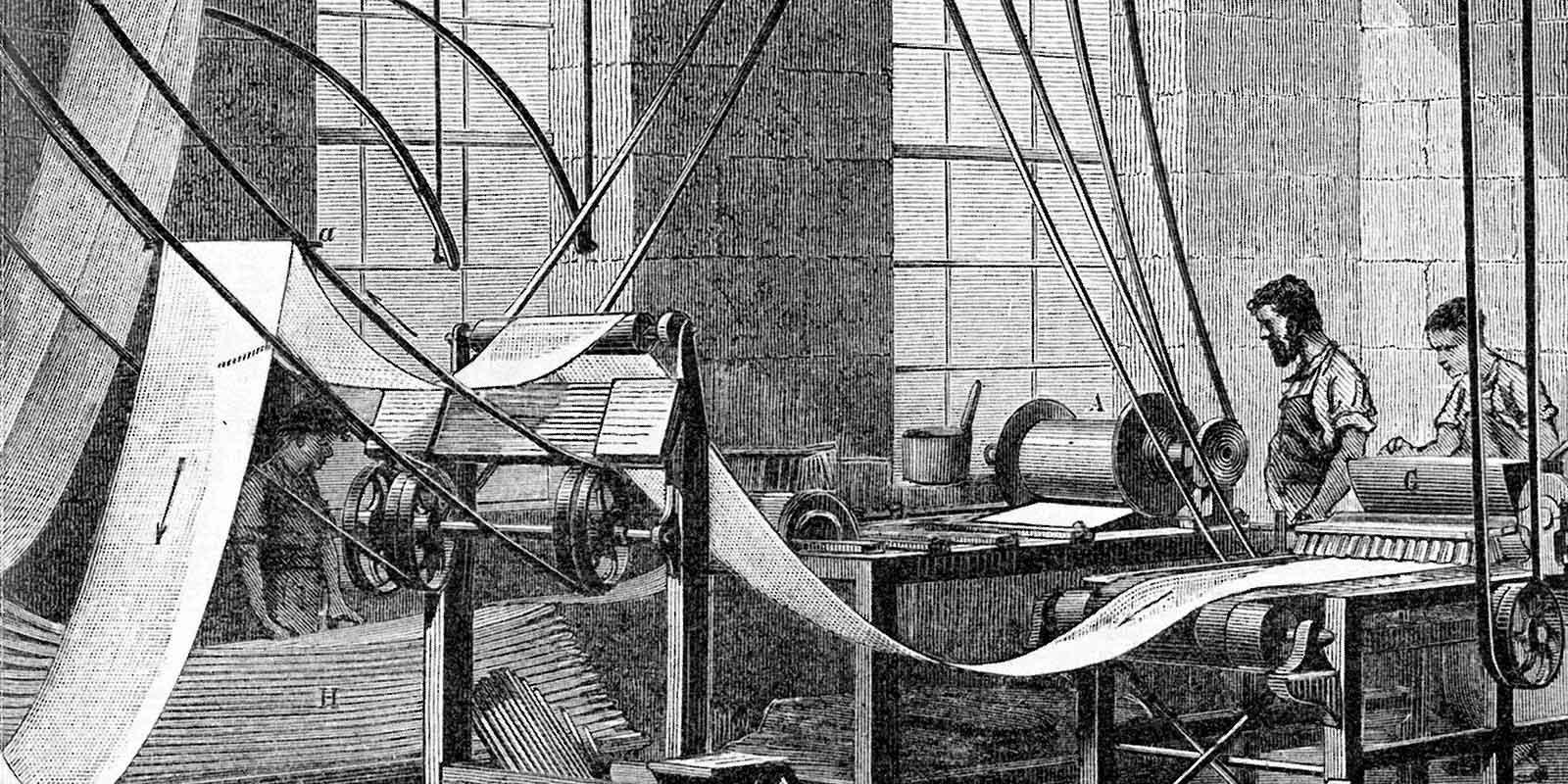
1862
The advent of machinesMachines are moving in everywhere. Even the production of wallpapers, which had been carried out by craftsmen not bound to guilds for around 150 years, is becoming increasingly mechanised. New markets are opening up. In Breisach, Franz Joseph Müller has recognised the new opportunities at an early stage.
The first machine based on a Parisian design is installed in 1862.
-
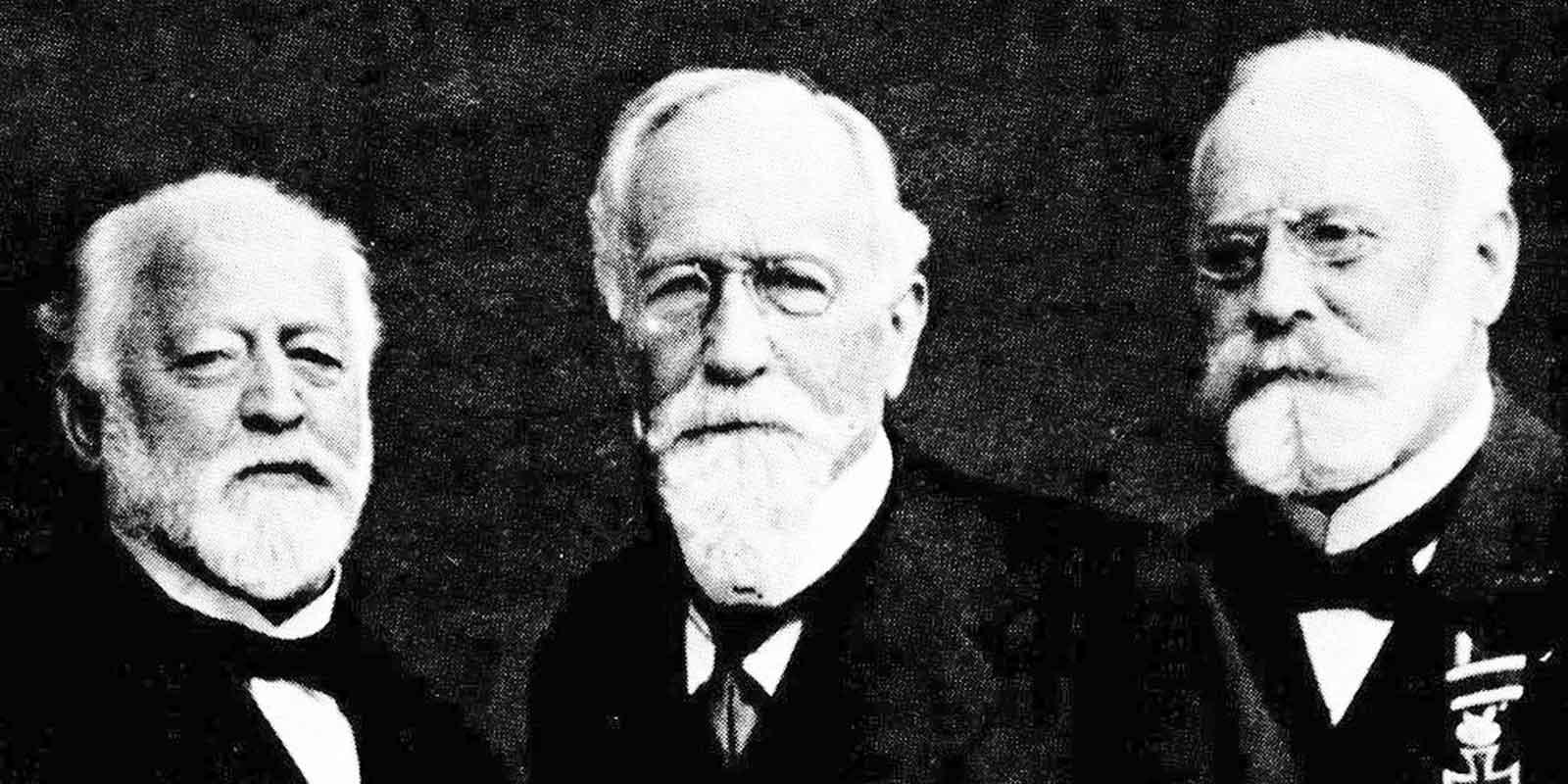
1878
Setting fashionsWallpapers are fashion products. And fashion moves with the spirit of the times. At the end of the 19th century, developments were based in Europe - as with clothes too - on French models: the houses of the bourgeoisie in Paris and Strasbourg. Adolf and Hermann Müller were responsible for successfully embodying the spirit of the times at Erismann from 1878 onward.
They installed state-of-the-art technology. And the wallpapers became more and more colourful – with the first eight-colour printing machine in 1889. Emil Müller, the architect, also contributed to the overall success of the firm, by building the new printing hall for the company in 1897. The wallpaper business was flourishing.
-
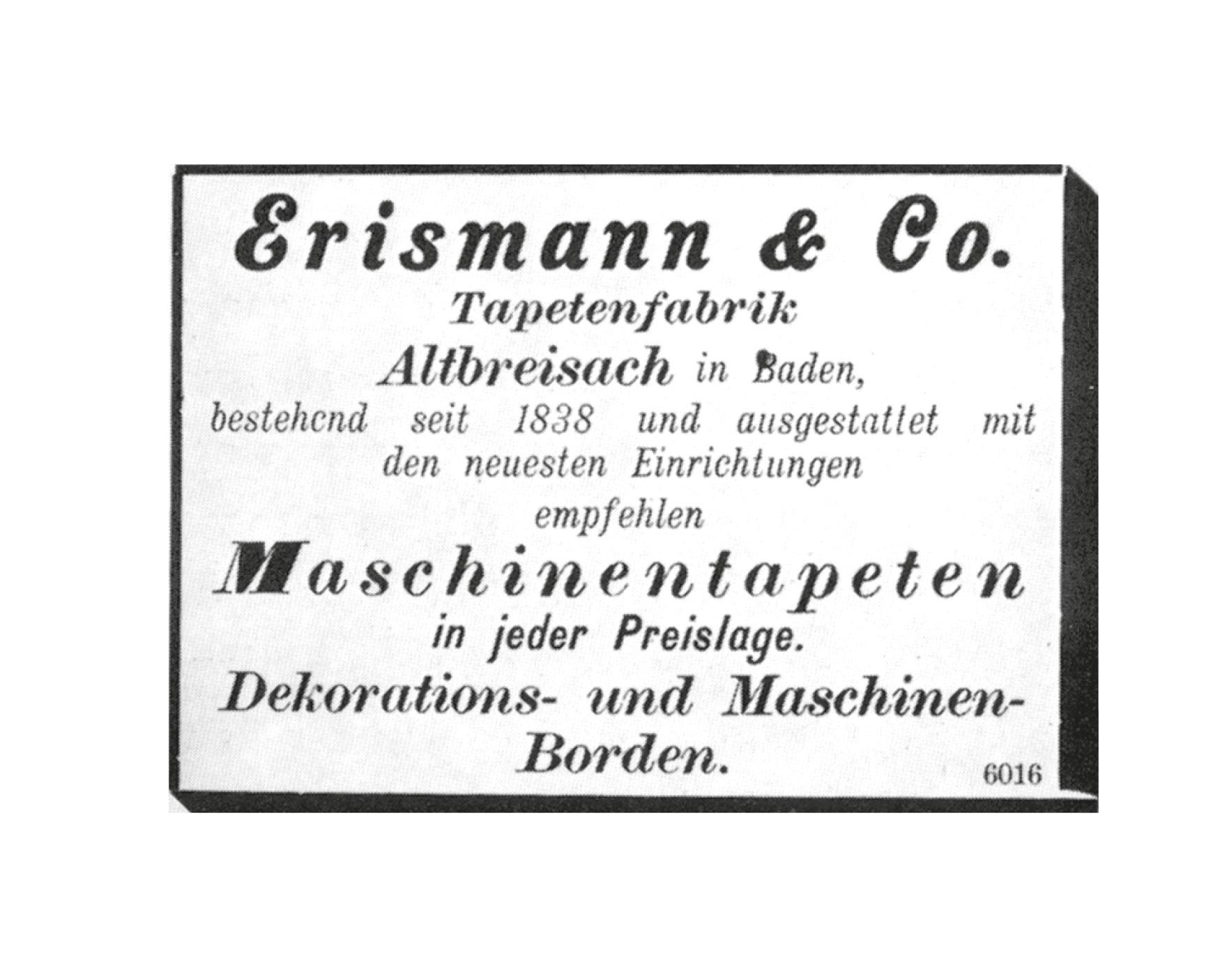
1897
"If you don't advertise, you'll die."Were the Müller brothers familiar with the marketing philosophy of their contemporary, Henry Ford? In any case, they were among the first at the end of the 19th century to take out advertisements in the trade press in order to draw attention to their products.
Following the advertising fashion of the day, there were no illustrations, but the fonts were as varied as possible. The Erismann wallpaper factory was one of the first firms to advertise in the first issue of 'Tapetenzeitung' (Wallpaper Journal) in 1897.
-
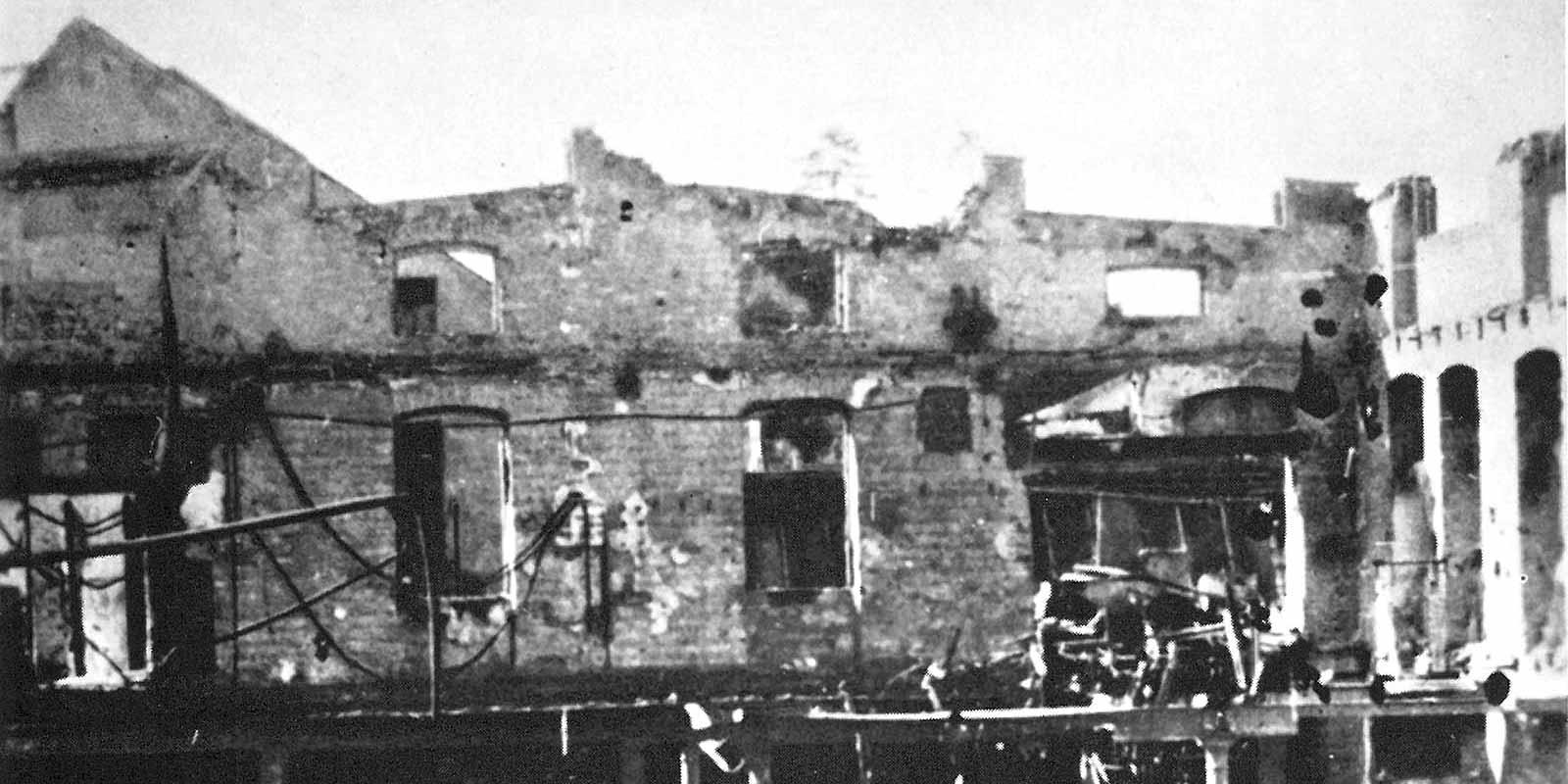
1945
The Post-War PeriodDuring the Second World War, production was suspended. The wallpaper factory itself had withstood all attacks. But in the turmoil of the first weeks after the War, it was completely destroyed by fire on 18 July 1945. The factory was in ruins.
Now the process started that had started a thousand times over around this time in Germany: clearing, renovating, building ... and not despairing.
-
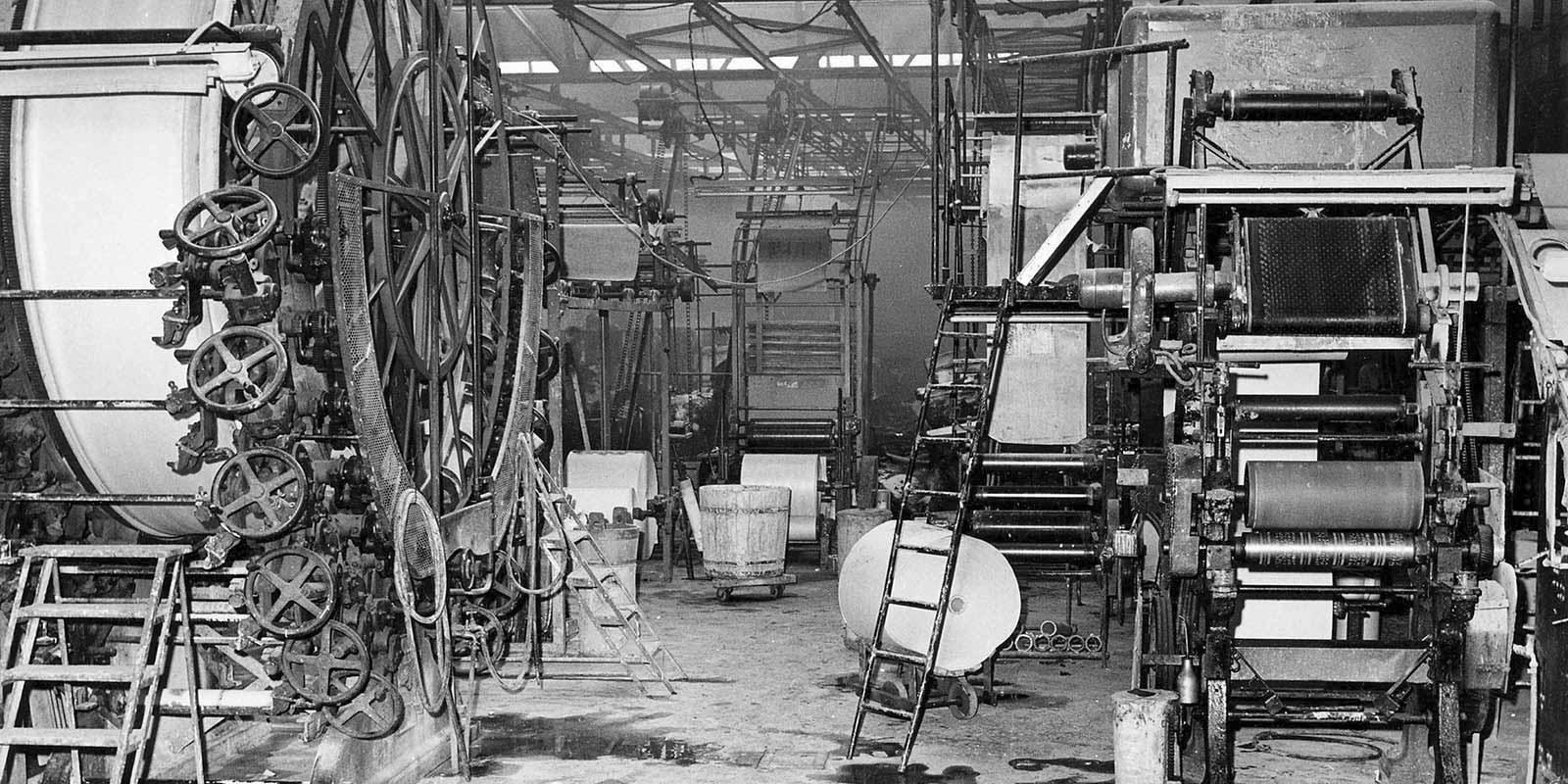
1948
ReconstructionThe first new printing machine in the post-war era was built in 1948 by Kroenert in Hamburg. Up to 1952, it was followed by five additional printing machines.
The first printing room in 1948 was followed by a second, in 1951/52, which housed a sixteen-colour printing machine. Progress continued apace.
-
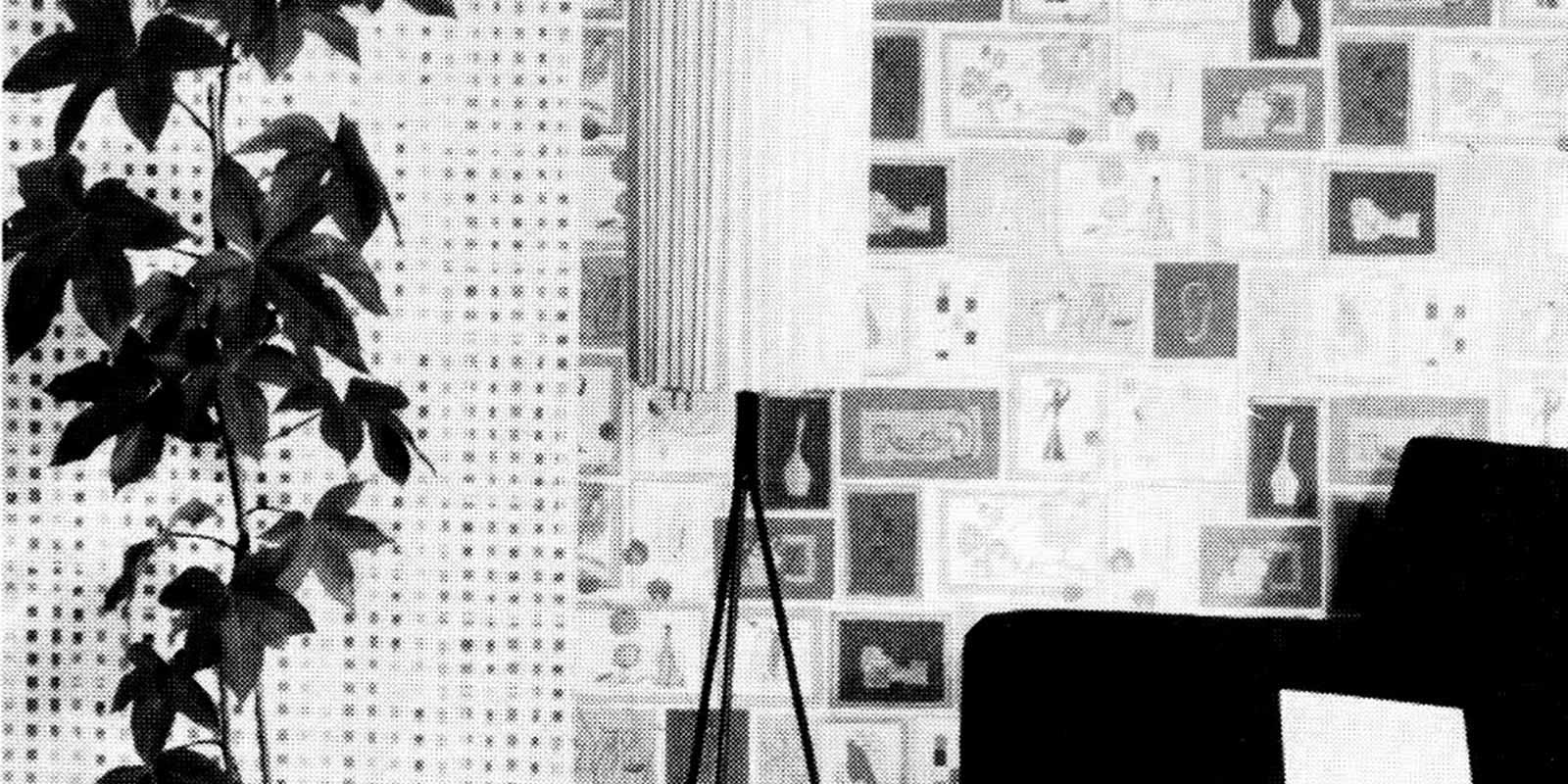
1960
InteriorsInsight: The Beatles appear in Hamburg, the Berlin Wall is built, John F. Kennedy becomes US President.
German living rooms are dominated by a playful austerity.
-

1975
New printing techniquesAt the beginning of the 1970s, Erismann introduces flexographic and rotogravure printing.
From 1985, with the introduction of relief or blown vinyl wall coverings, Erismann is able to offer a new product which is enthusiastically welcomed by all
-

1993
Expansionin 1993, Erismann moves into the newly built wallpaper factory just outside Breisach, with a full range of state-of-the-art machines:
modern logistics, market-led products and a highly qualified workforce make Erismann one of the world's leading wallpaper manufacturers.
-

2003
Eastward expansion2003 saw the foundation of the new factory, OOO Erismann, in Voskresensk, near Moscow. It houses cutting-edge production plants for manufacturing wallpapers using screen printing methods.
The operation in Voskresensk is expanded in 2008 by the construction of another production and warehouse unit and the addition of a third screen printing unit using the latest generation of technology.
-

2010
Obligations to the environmentErismann was the first German wallpaper manufacturer to produce all its wallpapers phthalate-free. Phthalates are used as plasticizers and are classified as "semi-volatile organic compounds". They are suspected of being harmful to health.
Since 2010, the company has been using an alternative plasticizer, DINCH, which was specially developed for medical products, such as infusion tubing. This also meets the strict requirements of EC Directive 2005/84/EC for toys and baby products.
-
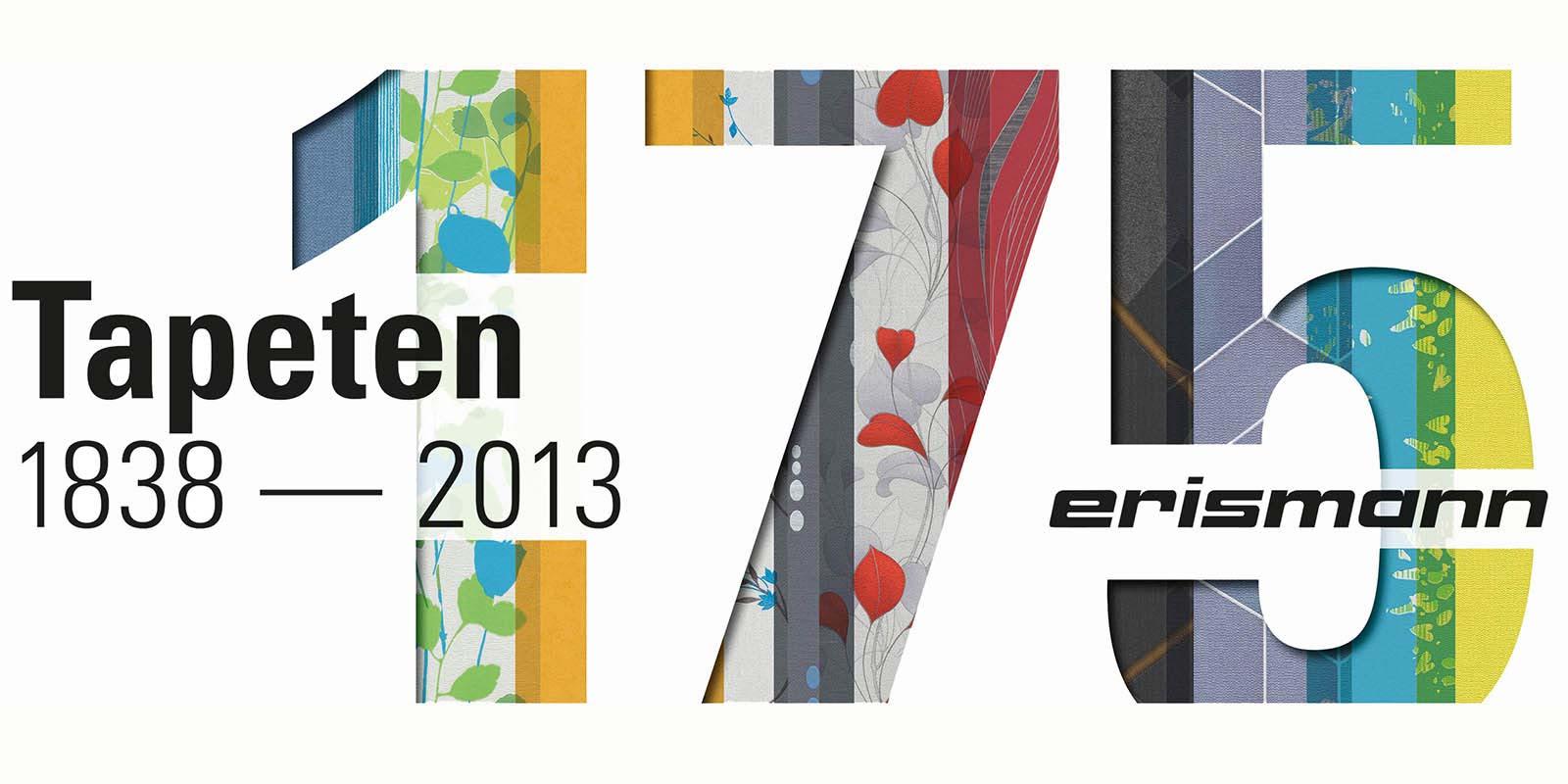
2013
175 years of ErismannErismann celebrates a noteworthy anniversary: 175 years since it was founded. National and international business partners are invited to Breisach for the anniversary celebrations, which are extensive.
Erismann presents the "One Seven Five" Anniversary Collection.

